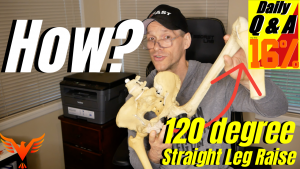My @neurocoffee is in hand and here’s this morning’s Q&A with a little bit of long-term athletic development feel to it. From Nate: I work do a lot of work with athletes in the age groups of 11-25 and I was curious if you think ISA compensations take time to manifest and therefore hard to […]
Indianapolis
Q & A for The 16% – The 120 degree Straight Leg Raise – Side Split Squat
I have @neurocoffee in hand and hope you have yours for today’s Q & A. From Domen: What about people that are presenting with excessive straight leg raise (120°) and have limitation in hip IR but sufficient ER? Could it be that this person has an inhaled pelvis with anterior orientation which would still allow […]
Q & A for The 16% – Training for Compressive Strategies in a Wide ISA Client
I have my @neurocoffee and I have a great Q & A for today with visual aids included. From Jimmy: I was wondering if you could go into a bit more detail about wide ISAs that show a swayback/posterior tilt, where would you start with someone like this? Following on from this, would that change […]
Q & A for The 16% – Narrow Infrasternal Angle Squat Strategy
Get your @neurocoffee. Here’s today’s Q & A. From Zhang: I noticed on my female clients, mostly narrow ISA, that a lot of them have anterior pelvis orientation (lordotic lumbar spine, limited hip extension, butt back during squats). One way I use to promote posterior pelvis orientation is by using a heel ramp and cueing […]
Q & A for The 16% – Overcoming the Limitation of Your Model of Movement
I’ve my @neurocoffee, hope you have yours. Here’s today’s Q & A. From Carmine: I appreciate the content you’ve continued to put out during these times. I have a question in regard to your model. George Box said “All models are wrong, some are useful.” What would you say are the limitations of your model? […]




